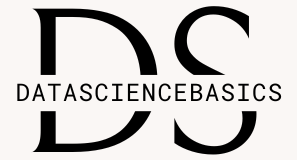
In the field of data science, programming languages serve as indispensable tools for data manipulation, analysis, and modeling. Among the myriad of programming languages available, Python and R stand out as two of the most popular and widely used languages in the data science community. In this blog article, we’ll explore the strengths, weaknesses, and use cases of Python and R to help you choose the right programming language for your data science endeavors.
Python: The Swiss Army Knife of Data Science
Python has gained immense popularity in the data science community for its simplicity, versatility, and extensive ecosystem of libraries and frameworks tailored for data analysis, machine learning, and visualization. Here are some key reasons why Python is a preferred choice for many data scientists:
- Ease of Learning: Python’s clean and intuitive syntax makes it accessible to beginners and experienced programmers alike, facilitating rapid development and prototyping of data science projects.
- Rich Ecosystem: Python boasts a vast ecosystem of libraries and packages specifically designed for data science, including:
- Pandas: A powerful library for data manipulation and analysis, providing data structures and functions for cleaning, transforming, and exploring datasets.
- NumPy: A fundamental library for numerical computing, offering support for multi-dimensional arrays, mathematical functions, and linear algebra operations.
- Scikit-learn: A comprehensive library for machine learning, featuring a wide range of algorithms for classification, regression, clustering, and dimensionality reduction.
- Matplotlib and Seaborn: Libraries for data visualization, enabling the creation of charts, plots, and graphs to communicate insights effectively.
- Community Support: Python enjoys a large and active community of developers, researchers, and practitioners who contribute to its development, documentation, and support, providing resources, tutorials, and forums for learning and collaboration.
- General-Purpose Language: Beyond data science, Python is a versatile language used in web development, software engineering, automation, and more, offering opportunities for cross-disciplinary collaboration and integration with other tools and technologies.
R: The Statistical Powerhouse
R is a language specifically designed for statistical computing and data analysis, favored by statisticians, researchers, and data analysts for its robust statistical capabilities and extensive collection of statistical packages. Here are some reasons why R remains a popular choice for data science:
- Statistical Prowess: R excels in statistical analysis, offering a rich set of built-in functions, packages, and libraries for descriptive statistics, inferential statistics, hypothesis testing, regression analysis, and more.
- Data Visualization: R provides powerful tools for data visualization, including the ggplot2 package, renowned for its flexibility, elegance, and ability to create sophisticated plots and visualizations with minimal code.
- Specialized Packages: R hosts a vast repository of specialized packages and libraries for various domains and industries, covering topics such as bioinformatics, econometrics, time series analysis, and spatial data analysis.
- Reproducibility and Documentation: R promotes reproducible research and transparent analysis through features like R Markdown, which allows researchers to integrate code, analysis, and visualizations into reproducible documents and reports.
Choosing the Right Tool for the Job
When deciding between Python and R for data science, it’s essential to consider the specific requirements, preferences, and constraints of your project, as well as your existing skills and familiarity with each language. Here are some factors to consider:
- Nature of the Project: If your project involves extensive statistical analysis, data exploration, and visualization, R may be the preferred choice. Conversely, if your project requires integration with other tools and technologies, such as web development frameworks or cloud services, Python’s versatility may be more suitable.
- Existing Skills and Knowledge: Consider your proficiency and experience with each language. If you’re already proficient in Python, leveraging its extensive ecosystem of data science libraries may be more practical. Similarly, if you have a strong background in statistics and prefer a language tailored for statistical computing, R may be a better fit.
- Collaboration and Integration: If you’re working in a team or collaborating with colleagues from different backgrounds, consider the interoperability and integration capabilities of each language. Python’s general-purpose nature may facilitate collaboration across disciplines, while R’s specialized focus on statistics may be advantageous in certain contexts.
- Personal Preference and Comfort: Ultimately, personal preference and comfort with the language play a significant role in the decision-making process. Experiment with both Python and R, explore their features, and evaluate which language aligns best with your workflow, coding style, and project requirements.
Conclusion
Python and R are both powerful programming languages with distinct strengths and capabilities for data science. While Python offers versatility, ease of learning, and a vast ecosystem of libraries, R excels in statistical analysis, data visualization, and reproducible research. By understanding the strengths, weaknesses, and use cases of each language, you can make an informed decision and choose the right tool for your data science projects.
Whether you opt for Python’s versatility or R’s statistical prowess, both languages provide powerful tools and resources for unlocking insights, solving problems, and driving innovation in the field of data science.

et fugit consequatur minima quia omnis error. accusantium voluptatem consequatur dolor ad neque similique rem praesentium odio. dolorum eum incidunt doloribus cumque voluptatum accusantium hic dolorib